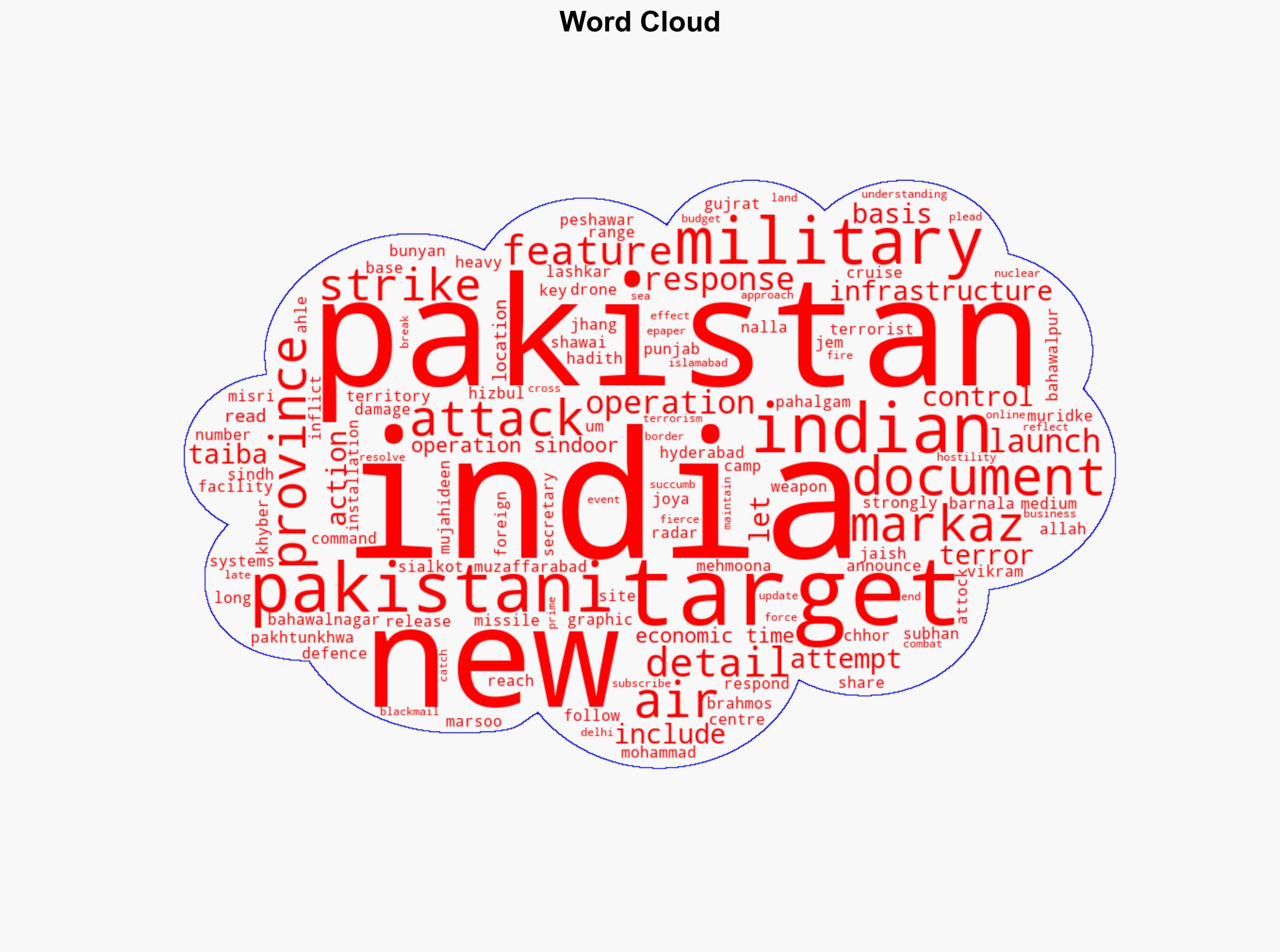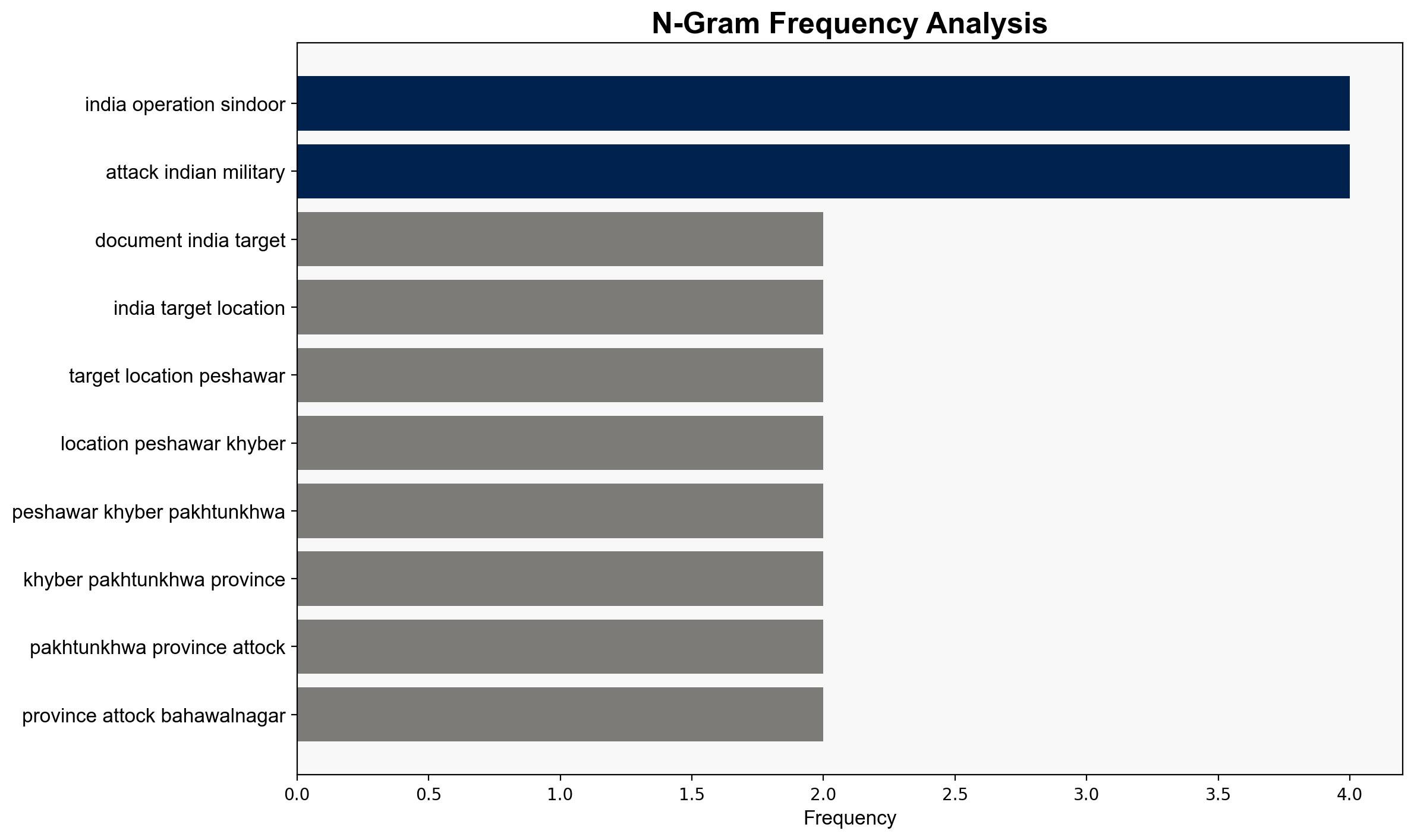Pakistani document shows India’s extensive strikes during Operation Sindoor lists 7 new targets – The Times of India
Published on: 2025-06-03
Intelligence Report: Pakistani document shows India’s extensive strikes during Operation Sindoor lists 7 new targets – The Times of India
1. BLUF (Bottom Line Up Front)
The recently released Pakistani document reveals that India conducted precision strikes on seven previously undisclosed targets during Operation Sindoor. These strikes were part of a broader strategy to dismantle terrorist infrastructure in Pakistan following the Pahalgam terror attack. The operation underscores India’s shift towards a more aggressive stance in counter-terrorism efforts, aiming to deter cross-border terrorism and reduce reliance on nuclear deterrence.
2. Detailed Analysis
The following structured analytic techniques have been applied to ensure methodological consistency:
Causal Layered Analysis (CLA)
At the surface level, the document highlights India’s tactical military response to terrorism. Systemically, it reflects a strategic recalibration in India’s defense posture, emphasizing preemptive strikes. The worldview suggests an evolving regional security paradigm, where traditional deterrence is being supplemented by proactive measures. Mythically, it challenges the notion of nuclear blackmail as a foolproof deterrent.
Cross-Impact Simulation
The strikes could exacerbate tensions between India and Pakistan, potentially affecting regional stability. Neighboring countries might reassess their security policies, while global powers could be drawn into diplomatic engagements to de-escalate tensions.
Scenario Generation
In a best-case scenario, the operation leads to a reduction in cross-border terrorism and improved regional security. A worst-case scenario might involve retaliatory actions escalating into broader conflict. The most likely scenario sees continued diplomatic engagements with sporadic military posturing.
3. Implications and Strategic Risks
The operation highlights vulnerabilities in regional security dynamics, particularly the risk of miscalculation leading to conflict escalation. It also underscores the potential for cyber and military retaliation, which could disrupt economic and political stability in the region.
4. Recommendations and Outlook
- Enhance diplomatic channels to manage and mitigate tensions between India and Pakistan.
- Strengthen intelligence-sharing mechanisms to preempt potential retaliatory actions.
- Scenario-based projections: Best case involves successful de-escalation through diplomacy; worst case involves military escalation; most likely involves periodic skirmishes with ongoing diplomatic efforts.
5. Key Individuals and Entities
Vikram Misri
6. Thematic Tags
national security threats, cybersecurity, counter-terrorism, regional focus




